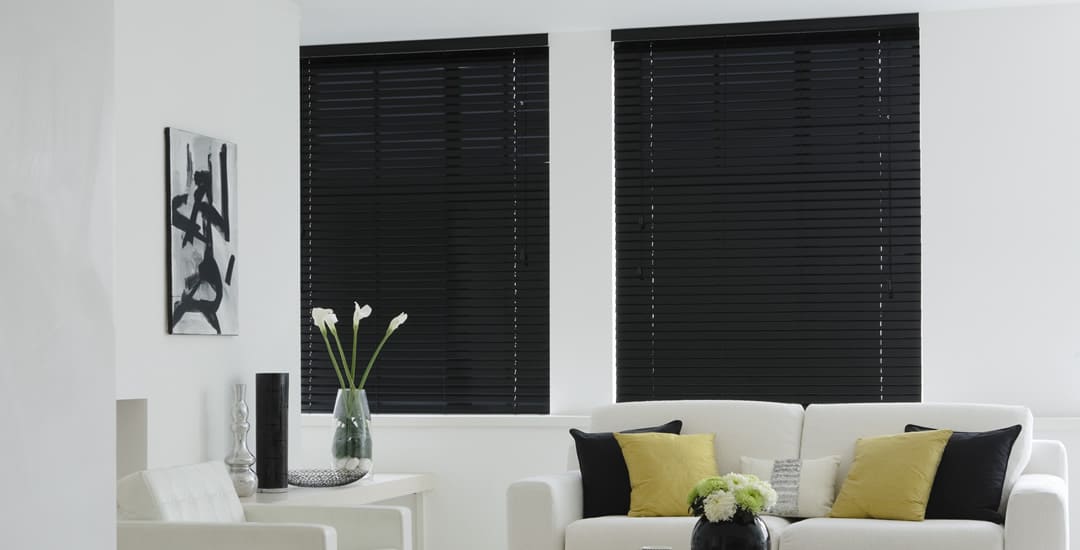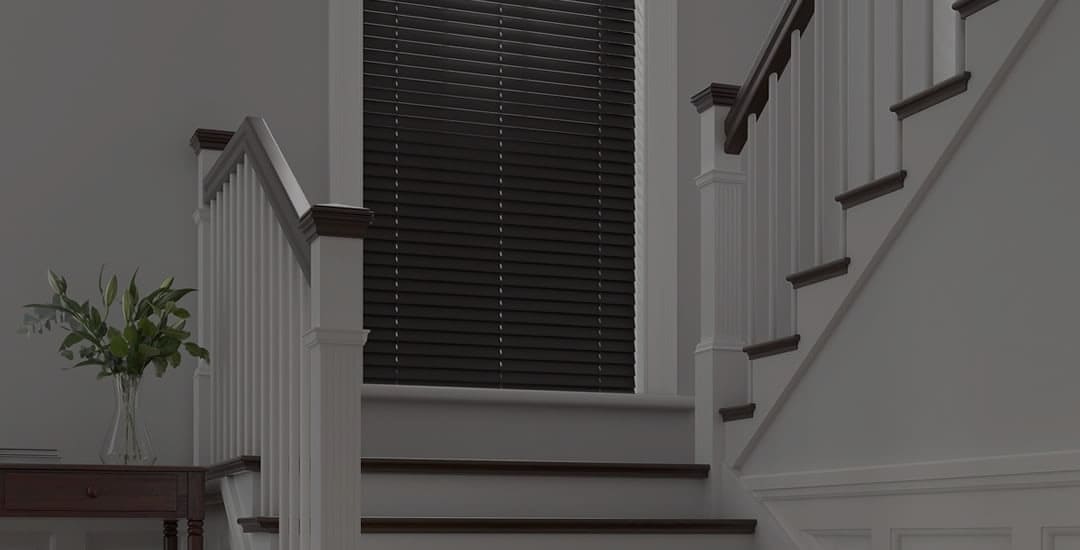
Wooden blinds do block out light very effectively when they’re fully closed, but contrary to popular belief, they don’t block as much light as a proper blackout blind.
However, most people who were faced with a room darkened with a properly hung blackout blind and another darkened with a properly hung wooden blind would be hard pressed to see a big difference in lighting levels in the main part of the room as opposed to right next to the window, particularly if the wooden blind was made with ladder tapes rather than ladder cords.
This blog post will tell you how well wooden blinds block light and why.
Do wooden blinds block out light in the same way blackout blinds do?
No, wooden blinds are not technically blackout blinds. Blackout blinds are impermeable to light across the whole fabric or material of the blind (when the blind is fully closed) and wooden blinds don’t technically meet the letter of this description.
This is firstly because wooden blind slats don’t form an exact seal, and so light can filter through the tiny gaps in the slats. Also, these slats are suspended by lift cords, which are part of the control mechanism that allows them to be raised and lowered.
Lift cords run up through little holes in the slats of the blind; these holes really are tiny, but they’re holes nonetheless and so, tiny pinpricks of light can still pass through them.
If your blind has ladder tapes over the lift cords, these will further reduce any potential light leakage from lift cord holes.
That said, your room would need to be very dark inside with fairly strong, direct sun or other lighting outside before you’d see any meaningful level of light leaking through a wooden blind.
There will also be a small degree of light leakage around the edges of the blind too; this will be more acute with blinds hung inside of the window recess rather than over it, assuming you have a good margin of additional coverage of the wall on all four sides around the blind.
Do wooden blinds make rooms dark?

While wooden blinds cannot accurately be described as blackout blinds, they do certainly make the room they’re used on very dark; to the point that even when you’ve given your eyes time to adjust and pick up any small amount of light that did make it into the room, you’d still probably find yourself unable to see your hand in front of your face and would stand an excellent chance of bumping into the furniture if you were moving around to test out the theory.
For many people, closed wooden blinds achieve a level of darkness that’s perfectly suitable for sleep, particularly if the outside world isn’t glaringly sunny. Even actual blackout blinds can get a level of light leakage around the sides if they’re not sized and hung with preventing this in mind, and so some folk (including some folk who work here) would consider differentiating between wooden blinds and blackout blinds to be an exercise in splitting hairs.
Do wooden blinds keep out light well enough to allow you to sleep?
This really depends on what level of light (or absence of light) you consider to be optimum for sleep. Few people really cannot sleep in anything other than pitch darkness, and there are probably more people who struggle with full dark or at least, struggle with waking up or keeping a natural sleep schedule with a room fully darkened.
However, there are plenty of people who absolutely cannot stand any light when they’re trying to sleep; and for them, wooden blinds would probably not quite make the grade.
For everyone else – probably the vast majority of sleepers – wooden blinds would be a good pick to keep the light out sufficiently to allow them to sleep.
On the other side of the coin, there are some folk who can’t or don’t like to sleep in the dark or that like to get enough light in the room when the sun does come up to enable them to orient themselves to the approximate time, and for these people, wooden blinds might actually be a little too good at deterring light for their liking.




